The indicators go off because your output is connected directly to the base of your power transistor, so it will be sinking a lot of current from the 555 output, and since the transistor base to emitter voltage is around 0.7V, it will cause the 555 output to sag too low to turn the LED on.
You need to put a resistor in series with the base of your transistor, to prevent it loading the output of the 555 too much and it's voltage dropping - I don't know what current your motor needs, or the gain of your transistor, but try 100Ω first. This will limit the current to (9V - 0.7V) / 100 = 83mA, which combined with the LED current is within the 200mA output spec of the 555, so it should easily be able to light the LED as well.
The 83mA will give you plenty of current at the base of your power transistor, so even if it's gain is very low, it only needs a gain of 25 to sink over 2A.
Transistor
Okay, we now have discovered that the schematic shows an NPN transistor but you are using a TIP42, which is a PNP transistor. A PNP is like an opposite version of an NPN, and to use it the voltages must be reversed in comparison. Look at the symbols for boht, note the difference in arrow direction - it always points to N type material (or away from P type)

You have a couple of options:
- Use a TIP41 or similar NPN power transistor and use the current circuit with base resistor suggested.
- Wire the circuit correctly to use your TIP42 PNP, which would look something like this:

Depending on how much current your motor is rated for, you may be better with a darlington or MOSFET, as the power transistors gain will drop at saturation, loading the 555 output too much so it may not have enough current to turn it on fully (which will cause it od disspate more power, etc) If it's under 1A you should be okay.



